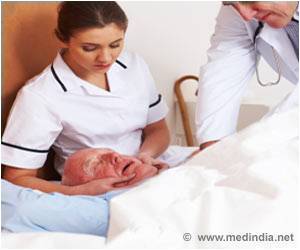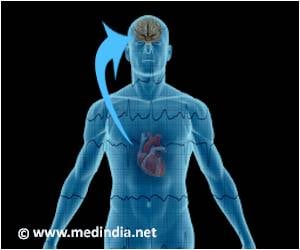Highlights
- Stroke kills billions of brain cells affecting brain synapses and connections between nerve cells.
- Treatment with C3a peptide helps to generate new nerve cells and also in the creation of new synapses between them.
"More nerve sprouts and connections between nerve cells are created so that the remaining cells can take over functions that the dead cells once had," says Marcela Pekna, associate professor at the Institute of Neuroscience and Physiology at Sahlgrenska Academy.
Stroke
A stroke occurs when blood supply to a part of the brain is blocked leading to the blockage of oxygen to the brain and ultimately to the death of the brain cells.
The risk facts for stroke are high blood pressure, heart diseases, soking, genetic factors and high levels of lipids in the blood.
Some Figures
In India, the estimated prevalence of stroke is 334-424/100,000 in urban areas and 84-262/100,000 in rural. The highest case fatality is in Kolkatta at 42%.
Administrating C3a peptide
C3a peptide, is produced naturally in the body and especially in certain medical conditions.
For the experiment, 28 mice with stroke were selected and C3a peptide was administered through nasal drops.
Half of the mice received C3a peptide and the half received a placebo.
The mice treated with the peptide recovered much better and faster.
"Mice have pretty good ability to recover after a stroke, even without treatment, but with C3a they got better much faster and were able to use the affected paw to a higher degree. And they remained better even four weeks after we finished the treatment," says Anna Stokowska, first author of the study and postdoctoral researcher at Sahlgrenska Academy.
Treatment with C3a peptide helped in generation of new nerve cells in the brain which led to the creation of synapses and connection between them. The healthy cells were then able to take over the function of the dead cells.
"Say a stroke kills ten million brain cells. Newly created cells equal less than one percent of those that died, and how much can that help? The formation of new nerve synapses is what allows a person to learn, for example, to speak or use her hands and legs again," says Marcela Pekna.
Some hurdles
- The prptide is inactivated if given orally or intravenously, so nasal drops had to be used.
- C3a peptide is also very expensive to produce and would need to be replaced by a smaller, cheaper molecule with similar properties.
"In principle, all stroke patients could receive the treatment. Compare that with removing the blood clot, which must be done within the first few hours. Most people arrive at the hospital too late for that treatment. We believe that a combination of this treatment and the correct type of rehabilitation can help patients improve even faster. It might also be possible to treat other illnesses than stroke, such as brain damage after traffic accidents. But that remains to be seen; there is still a long way to go," Pekna says.
The researchers hope to apply this treatment strategy in humans, in the future.
Another benefit of using the peptide is that it was used in the first week after onset of symptoms in the mice and yet proved to be helpful in their recovery. This can be used as an opportunity to help many people who were unable to receive prompt treatment after stroke.
The research is published in the journal Brain.
Reference
- World Stroke Day 2016: Face the Facts - Stroke is Treatable - (https://www.medindia.net/news/healthwatch/world-stroke-day-2016-face-the-facts-stroke-is-treatable-164713-1.htm/)
- Marcela Pekna et al. Complement peptide C3a stimulates neural plasticity after experimental brain ischaemia. Brain; (2016) http://dx.doi.org/10.1093/brain/aww314
Source-Medindia















